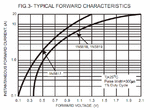Follow along with the video below to see how to install our site as a web app on your home screen.
Note: This feature may not be available in some browsers.

Hey,
the amplifier gain set in such a way that it can output about 4.7V. But in the case if the voltage exceeds I want to cut it off. So can someone point me to a simple circuit for this.
Thanks